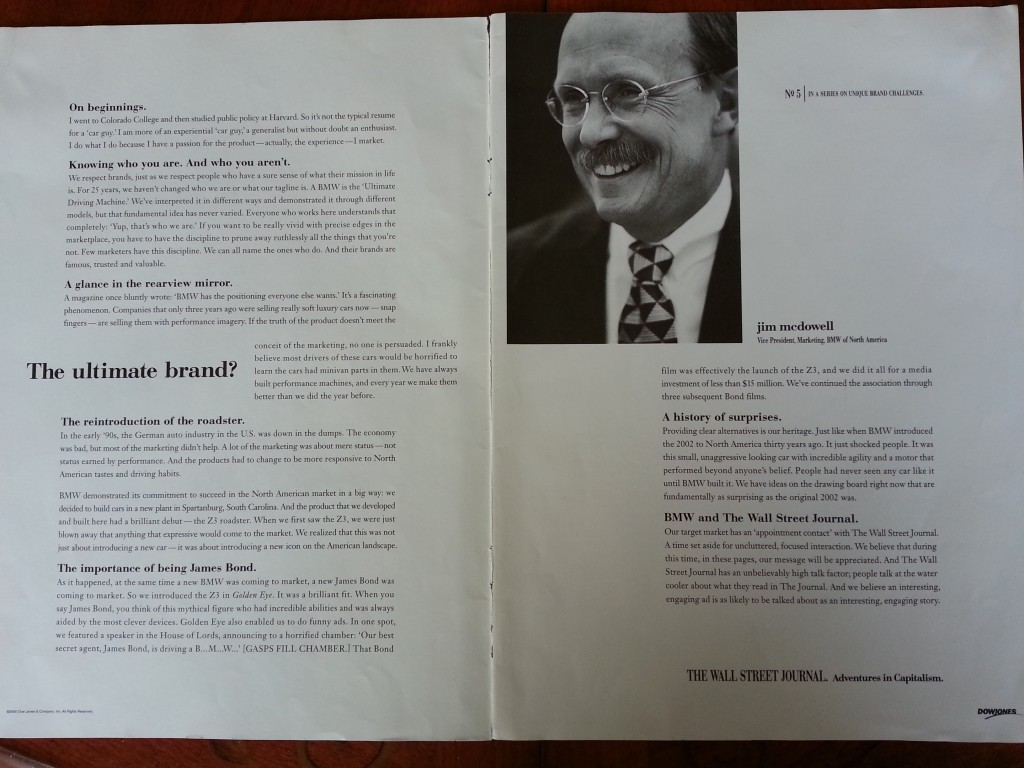Marketing Like It is 2001
History provides a revealing context for identifying the significance of the present and an outlook for the future. I became convinced of this when I recently perused a marketing journal from 13 years ago.
I had pulled out the January 2001 issue of ANA’s The Advertiser because a friend of mine featured in it was celebrating her 50th birthday and I thought it might make for a fun gift. But as I skimmed the magazine contents, I found the articles provided more than just a trip down memory lane – they provided keen insight into just how much marketing has changed, and how much it hasn’t, in a little more than a decade.
On the side of what’s changed dramatically is search. A piece billed as “a solution to the brand vs. Web address problem” discussed the problems advertisers were experiencing back then in directing people to the right web page. Back then, companies took to using calls-to-action with long, complicated URLs which were hard for customers to use and even harder for companies to maintain. The piece suggested that “Internet Keywords” was the solution. “Just type ‘Panasonic DVD’ into the address bar of Internet Explorer and you’ll go directly to that page within the Panasonic website,” the article declares triumphantly. Today the thought of keywords as revolutionary is almost as quaint as the thought of using a DVD player. Who knew just 13 short years later, we’d be able to say to a hand-held device “I’m hungry for tacos” and we’d immediately be directed toward a handful of nearby taco shops with digital coupons in tow?! Search has come a long way, baby.
Online promotion has also changed significantly. An article entitled “You May Already Be a Winner” described how forward-thinking brands at the time were using online sweepstakes and contents to generate web traffic. CDNow (remember that company?!) ran a sweepstakes in which it gave away a car to boost its conversion rate. Now running such a mass appeal, spam-like gimmick seems foolish. We should be thankful that advancements in data and technology have transformed online customer acquisition from a game of hide-and-seek to a highly analytical, algorithm -driven tactic with specific ROI.
On the flip side, it was interesting to see how some things in marketing haven’t changed much since 2001. “The Data Silo Effect” could have been written today. The article talked about the problem of valuing marketing activities. After describing a scenario in which the ROI on an ad was measured by click-through-rate, it says:
“…advertising is not about CTR. It’s not even about click-to-visit ratio. It’s about the value of customers who click through over time. Frankly, most companies would have made their decisions based on single short-term metrics. Those are silo marketers. Customer-centric marketers do not make decisions based on campaign response data alone, but on campaign data that’s linked to post-click customer behavioral data such as log files and transaction data.” [emphasis mine]
It seems the data aggregation and analysis necessary to form a customer-centric marketing approach still eludes advertisers today. Too many companies seem satisfied with – or perhaps resigned to – isolated snapshots of customer purchase behavior. The need for a more holistic view of marketing remains.
Another piece of evidence of how some things remain the same was an ad in the magazine – it was one from the series of Wall Street Journal ads that profile prominent executives. This one featured Jim McDowell, then VP Marketing at BMW, talking about how BMW has remained “the ultimate brand” and ending with his endorsement of the WSJ.
The critically acclaimed campaign started featuring advertising executives and then expanded to a range of creative leaders. It’s one of the most memorable ad campaigns for a media brand and remains a model for many marketers today as they look for ways to seamlessly weave promotion and content to engage customers. The storytelling and authentic tone of the effort serves as an inspiration in this age of content marketing.
Confucius once said “Study the past if you would define the future.” My read of that old journal gave me a lot of food for thought on the opportunities that lie ahead for marketers.
Podcast: Play in new window | Download
related:

